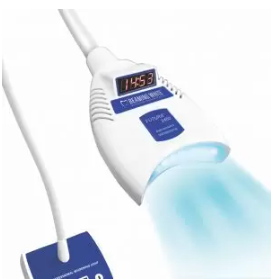You may brighten your grin by five to ten shades in as little as twenty minutes. In addition, when a teeth whitening procedure is performed by a professional, neither a needle nor a dental drill is used in any way. Instead, you only need to position the whitening agent where you like it, shine the LED light on it, and then wait for the desired results.
Do you believe this will turn out to be a lie? The reality is, however, that this is one of the few occasions in which that statement is accurate. The advancements that have been made in dental technology have made it possible to achieve a smile that is both whiter and brighter. It cannot be denied that the presence of light influences the acceleration of the bleaching process. However, you won’t be able to get a whiter smile by quickly exposing your teeth to an LED light. To understand the role LED lights play in teeth whitening, one must first understand how teeth whitening works.
Where do you even start when it comes to the teeth-bleaching process?
When you go to the dentist to have your teeth whitened professionally from Beaming White, the dentist will start by cleaning your teeth so that the whitening solution can be applied evenly over all of your teeth. You will be given specialist equipment to keep your mouth open and protect the gums and other fragile tissues while whitening your teeth. These appliances will be supplied to you while your teeth whitened. After using the whitening gel, you should wait around 20 minutes before removing it from your teeth.
Whitening gel can penetrate the porous enamel and dentin of the tooth, which results in the discoloration being lightened. Hydrogen peroxide, often included in whitening gels, is responsible for removing stains before being safely absorbed by the body, where it does not do any damage. Cosmetic dentists use higher dosages of the bleaching agent to get faster and more successful results than those achieved with over-the-counter whitening products, which typically employ only small amounts of hydrogen peroxide.
When hydrogen peroxide comes into contact with teeth, an oxidation reaction occurs. During the oxidation process, the links between the molecules that caused the discoloration are broken, leading to the stains being removed. The most basic type of hydrogen peroxide, which is used to whiten teeth, works by eliminating stains from the enamel and dentin layers of the teeth. Despite the short time that the whitening gel is in contact with your teeth, your teeth will continue to get whiter for up to 24 hours after the treatment has been applied.
So, how might LED lights be of assistance?
You may wonder how an LED light could make this process faster. An LED (light-emitting diode) only produces a single color of visible light when powered on by an external source. In the past, the bleaching process was sped up using ultraviolet light (UV). Conversely, ultraviolet (UV) radiation has been associated with cellular changes that might lead to cancer.
As a direct consequence, LED lights have rapidly taken the role of UV lamps in whitening treatments. There is no need for LED lights to be warmed up before they can be used since they are energy efficient, long-lasting, and immediately effective. Because of their ability to spread heat, they can provide more light without causing an increase in the temperature of the space. As a result of these characteristics, they provide a fantastic source of light when it comes to whitening teeth.
It has been discovered that light-emitting diode, or LED, lights speed the chemical processes that remove stains from teeth, which is why they are increasingly used in teeth-whitening lighttreatments. As was said before, whitening treatments’ effects last a single day. Therefore, accelerating the pace at which the chemical reactions occur will only result in more stains being removed in the permitted amount of time. When as many stains as possible are removed from your teeth, the overall appearance of your smile will be whiter and brighter. When employingteeth whitening light, a single session may eliminate an average of 6-8 shades of discoloration from a person’s smile.
The use of LED lights during the whitening process has, generally speaking, boosted the efficacy of the whitening chemicals, resulting in whiter and brighter smiles. Despite this, the whitening agent is still the essential component of the whole process of lightening.
LED Tooth Whitening’s Impact on Dental Wellness
It’s common knowledge that teeth whitening may make you seem younger, but is it safe for your teeth? Research has shown that although teeth whitening might enhance your smile’s overall look, it can also be detrimental to your dental health.
Studies have shown that people who use teeth whitening light systems generally have heightened sensitivity in their teeth and gums after treatment. People who whiten their teeth at home or at a professional clinic may have heightened sensitivity to hot and cold after using certain bleaching methods.
Tooth whitening might be harmful to your gums and teeth, according to research. LED teeth whiteningmay have side effects, including hypersensitivity and demineralization. Therefore it’s important to follow your dentist’s advice while using it.









